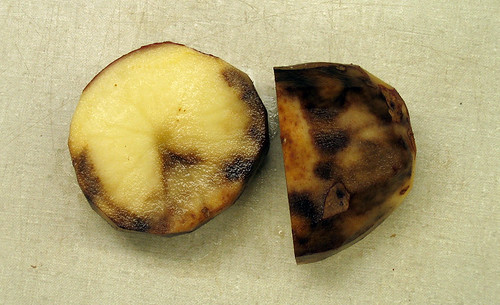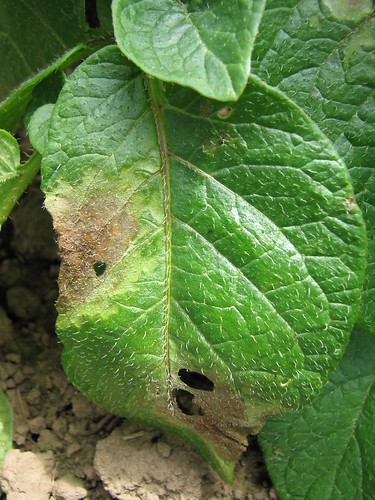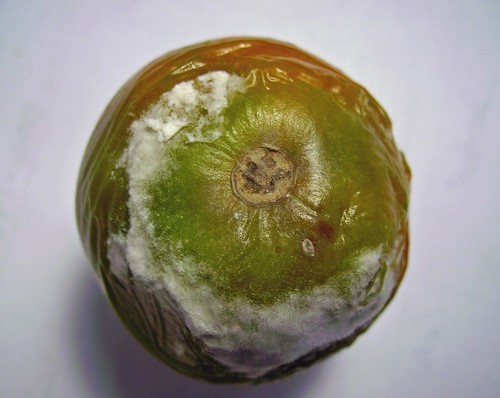
The following article was not written by TheGardenLady, but she thinks it’s a valuable one that the public should know about.
Irish Potato Famine Disease affecting Gardens and Farmers throughout the Greater Northeast
Revised by A. Wyenandt, NJAES, Rutgers University and M.T McGrath, Cornell University – Original article by Thomas A. Zitter, Cornell University, Ithaca, NY – Updated July 15, 2009
Late blight, caused by Phytophthora infestans, is a serious disease that affects tomato plants and potato plants around the world.

Late blight can become a serious problem because it can quickly kill affected plants and its spores are easily carried in wind currents to infect other susceptible plants in even the most remote areas in our region.
Late blight occurs sporadically in the Northeast in any given year because farmers diligently use methods to prevent the pathogen from surviving overwinter. Since our summer thus far has been cool with frequent rains, weather conditions have been very conducive for late blight development.

Currently, all tomato and potato plants grown in home gardens and in commercial fields are susceptible to late blight!
Commercial growers are able to respond to reports of the disease by spraying fungicides to prevent its spread, which otherwise would mean certain death of their entire crops. Unfortunately, many homeowners may not be as aware of this important disease, and if no corrective actions are taken in a timely manner, home gardens can provide a source of inoculum (i.e. spores) for their neighbor’s gardens and for commercial interests.
The occurrence of late blight in 2009 is different compared to most seasons. This is the earliest the disease has been reported over such a broad region of the country. More tragic for the Northeast, is that infected plants have been distributed to large local retail stores throughout the region (Ohio to Maine). Never before has such an extensive distribution of infected plants occurred.
Continue reading “Gardeners in the Northeast: Beware of Late Blight”
